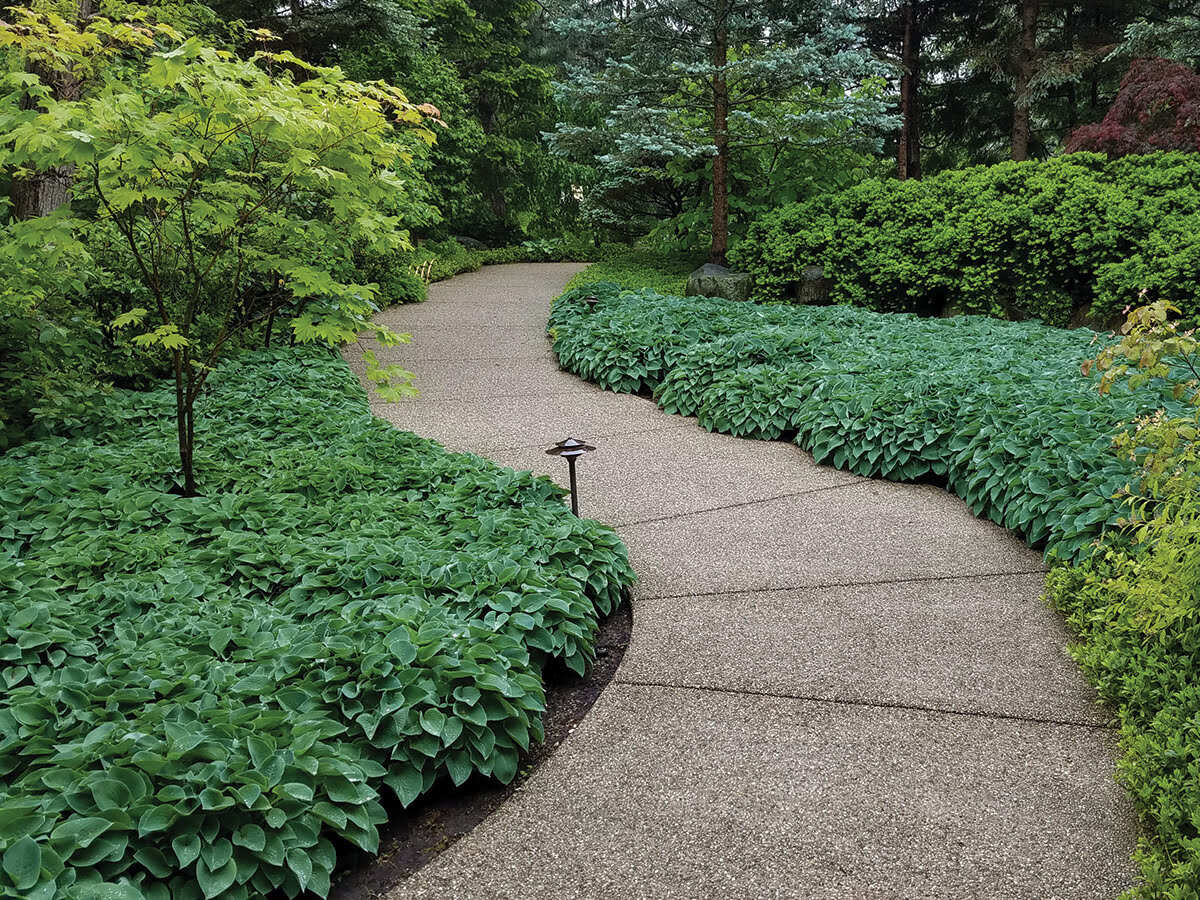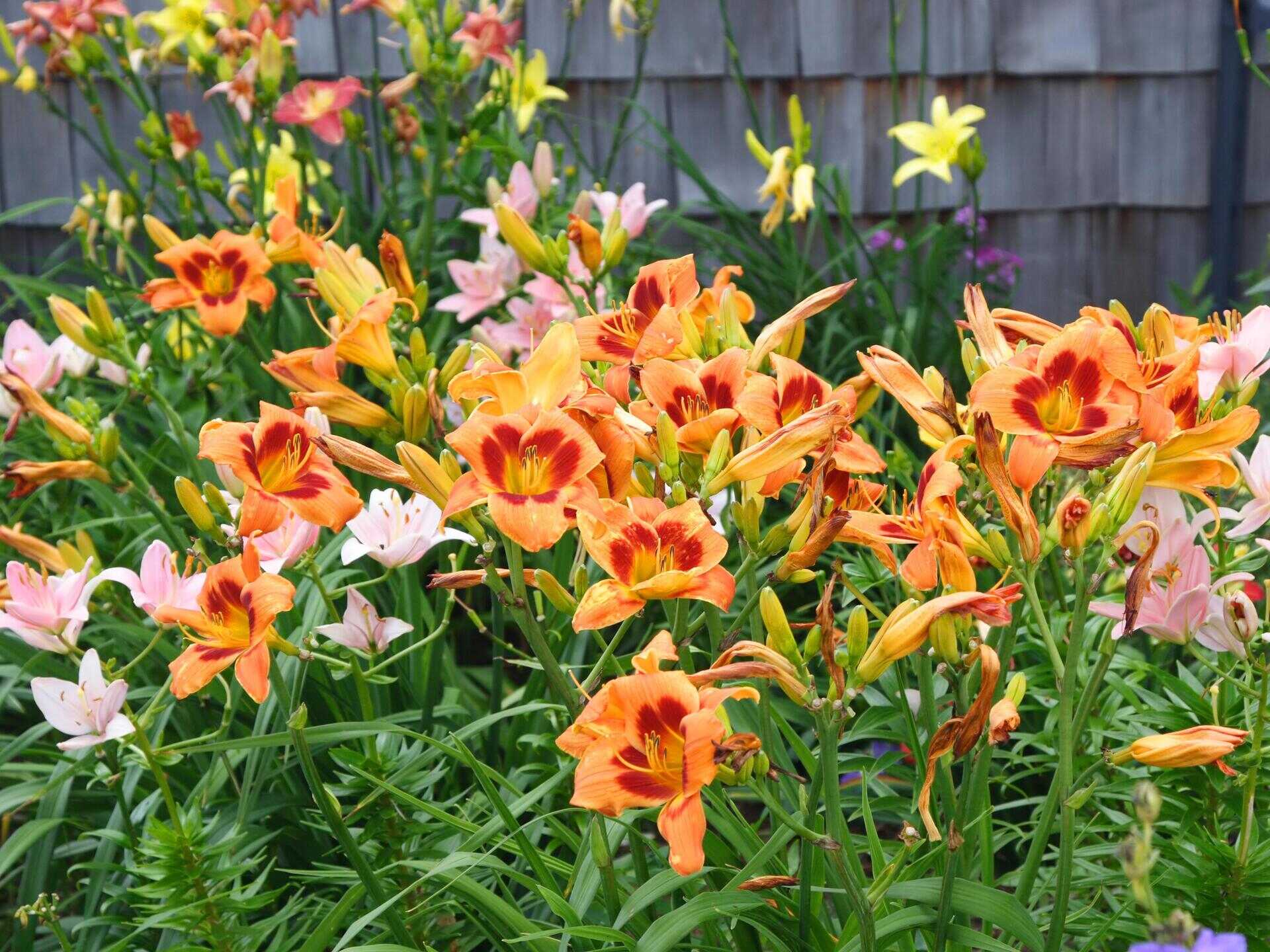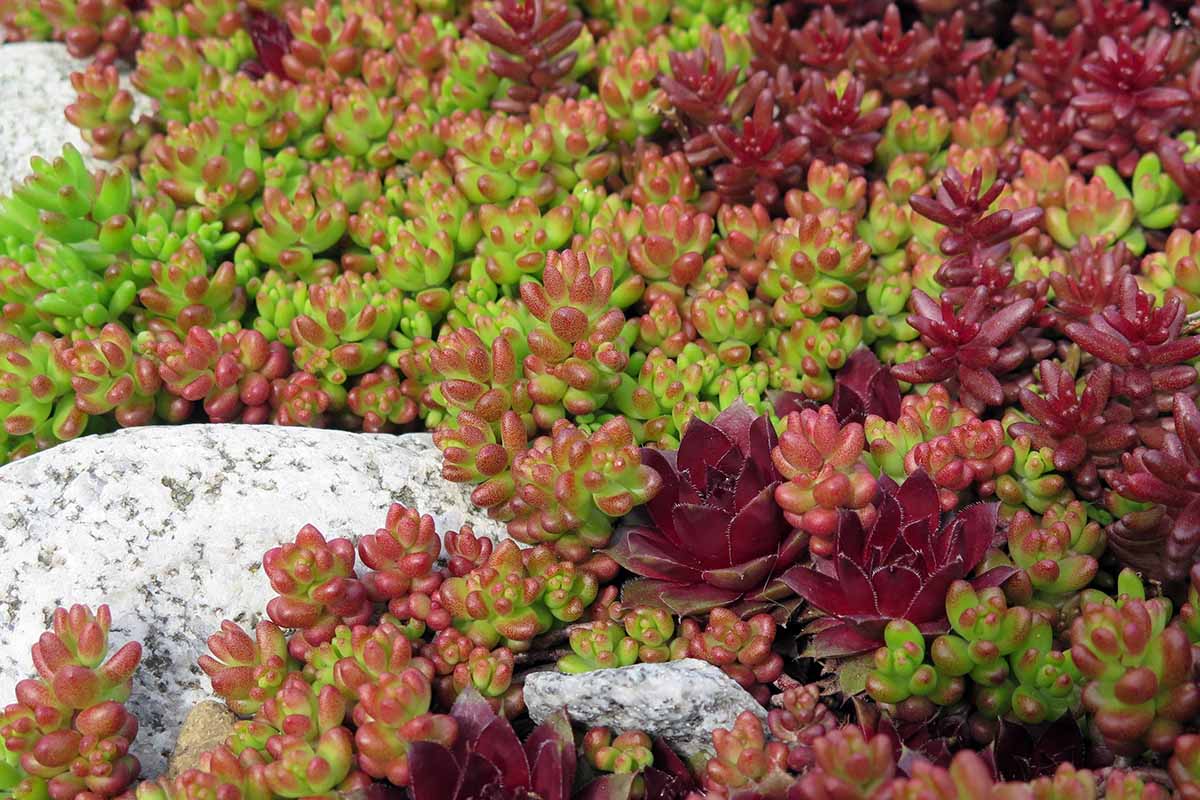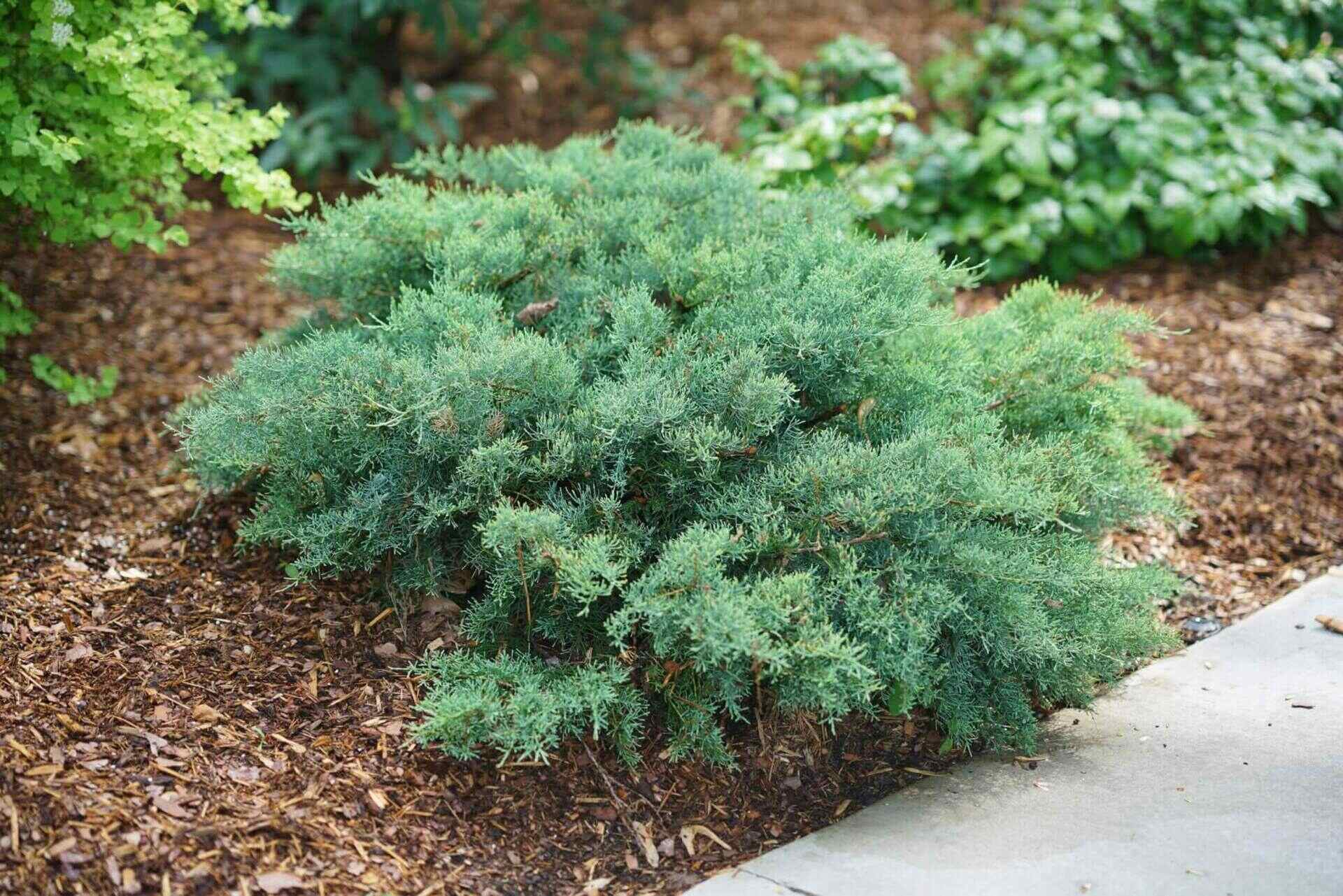Home>Garden Essentials>When Should I Plant Ground Cover In Connecticut


Garden Essentials
When Should I Plant Ground Cover In Connecticut
Modified: March 7, 2024
Find out the best time to plant garden ground cover in Connecticut. Discover the ideal season for a flourishing garden with our expert tips.
(Many of the links in this article redirect to a specific reviewed product. Your purchase of these products through affiliate links helps to generate commission for Storables.com, at no extra cost. Learn more)
Introduction
When it comes to creating a beautiful and well-maintained garden, the choice of ground cover plays a vital role. Ground cover not only adds aesthetic appeal but also provides numerous benefits such as weed suppression, erosion control, and soil moisture retention. If you’re a gardener in Connecticut looking to plant ground cover, you may be wondering when the best time to do so is.
Connecticut, with its diverse weather patterns and varying temperatures throughout the year, requires careful consideration when deciding the ideal time for planting ground cover. Factors such as the type of ground cover, local climate, and soil conditions need to be taken into account to ensure successful establishment and growth.
In this article, we will explore the different factors to consider and guide you through the best times to plant ground cover in Connecticut. Whether you are looking to add color to your garden in spring, protect your soil during the hot summer months, or create a vibrant fall landscape, we’ve got you covered.
Key Takeaways:
- Choose spring for planting ground cover in Connecticut for optimal growth. Consider factors like climate, soil, and sunlight for successful establishment.
- Summer planting requires extra care due to heat, but with the right species and watering, it can be rewarding. Fall and winter also offer unique opportunities for planting.
Read more: When To Plant Pachysandra Ground Cover
Factors to Consider
Before diving into the best times to plant ground cover in Connecticut, it’s important to consider a few factors that can significantly impact the success of your planting endeavor:
- Local Climate: Connecticut experiences a temperate climate with hot and humid summers and cold winters. Understanding your local climate is crucial as it will determine the type of ground cover that can thrive in your area.
- Soil Conditions: Different ground cover plants have specific soil requirements. Conduct a soil test to determine the pH level, nutrient content, and drainage capabilities of your soil. This will help you choose the right ground cover species that can thrive in your specific soil conditions.
- Sun/Shade Conditions: Evaluate the amount of sunlight your garden receives throughout the day. Some ground cover plants prefer full sun exposure, while others thrive in shady areas. Matching the right ground cover species with the available sunlight in your garden is crucial for their growth and health.
- Maintenance Level: Consider the amount of time and effort you are willing to dedicate to maintaining your ground cover. Some plants require regular pruning, while others are low-maintenance. Determine your maintenance preferences beforehand to choose the right ground cover that suits your needs.
- Desired Function: Identify the primary function you want your ground cover to serve. Are you looking for erosion control, weed suppression, or simply adding aesthetic beauty to your garden? Different ground cover species have varying capabilities in fulfilling these functions.
By considering these factors, you will be able to narrow down your options and make informed decisions when selecting and planting ground cover in Connecticut. Now, let’s explore the best times to plant ground cover based on the seasons.
Best Time to Plant Ground Cover in Connecticut
Connecticut experiences four distinct seasons, each with its own climate and conditions. The best time to plant ground cover can vary depending on the specific species you choose. Let’s take a closer look at the ideal times for planting ground cover during each season:
- Spring: Spring is an excellent time to plant ground cover in Connecticut. As the temperatures start to warm up, the soil becomes more workable, providing optimal conditions for root establishment. Most ground cover plants thrive in the spring, taking advantage of the moist soil and moderate temperatures. Aim to plant your ground cover in late April to May, after the threat of frost has passed and the soil has warmed up.
- Summer: While planting in the hot summer months may not be ideal for some ground cover species, it can still be done if proper care is taken. Choose heat-tolerant varieties and make sure to provide sufficient water during establishment. Planting in early summer allows the ground cover to establish before the peak heat of mid-summer hits. Be mindful of extreme temperatures and provide shade or mulch to protect the newly planted ground cover from heat stress.
- Fall: Fall is another suitable time for planting ground cover in Connecticut. The cooler temperatures and reduced evaporation in the fall create favorable conditions for root development. This gives the ground cover a head start in establishing a strong root system before the winter arrives. Planting in early to mid-fall, around September to early October, is recommended to ensure sufficient time for root growth before the first frost.
- Winter: While it’s uncommon to plant ground cover during the winter months, there are certain species that can be planted as dormant plants or through winter sowing. This method involves sowing ground cover seeds in containers outdoors during the winter, allowing nature to provide the necessary cold stratification. Check with your local nursery or garden center for winter-sowing specific ground cover options.
Remember, the timing will vary depending on the specific ground cover species you choose, so it’s important to do your research or consult with local gardening experts for the best planting times.
Now that you have a better understanding of the best times to plant ground cover in Connecticut, you can plan your gardening endeavors accordingly. Whether you choose to embrace the colorful blooms of spring, the heat-tolerant varieties in summer, the vibrant foliage of fall, or explore winter planting options, incorporating ground cover into your garden will add beauty, functionality, and diversity to your landscape.
Happy planting!
Spring Planting
Spring is a wonderful time to plant ground cover in Connecticut. As the winter frost subsides and temperatures begin to rise, the soil becomes more workable and ideal for planting. Here are some key points to consider when planning your spring ground cover planting:
- Timing: Aim to plant your ground cover in late April to early May, once the threat of frost has passed and the soil has warmed up. This allows the plants to take advantage of the moist soil and moderate temperatures, promoting healthy root development.
- Prepare the Soil: Before planting, prepare the soil by removing any weeds, rocks, or debris. Loosen the soil to a depth of 6 to 8 inches and incorporate organic matter, such as compost or well-rotted manure, to improve soil fertility and drainage.
- Selecting the Right Species: Choose ground cover species that thrive in partial or full sun, depending on the sunlight conditions in your garden. Some popular ground cover options for Connecticut include creeping phlox, creeping thyme, and periwinkle. Consider the desired function of your ground cover, such as erosion control or adding color, when selecting the species.
- Planting Technique: Dig a hole slightly larger than the root ball of your ground cover plant. Place the plant in the hole, making sure it stands at the same level as the surrounding soil. Backfill the hole with soil, gently firming it around the roots. Water thoroughly after planting to ensure good establishment.
- Maintenance: During the spring, keep a close eye on your newly planted ground cover. Regularly water and monitor for signs of pests or diseases. Mulching around the plants can help conserve moisture and suppress weed growth. Consider applying a slow-release fertilizer to provide the necessary nutrients for healthy growth.
By following these guidelines, you can ensure a successful spring planting for your ground cover in Connecticut. Embrace the beauty of blossoming flowers and lush green foliage as your ground cover thrives throughout the season.
Happy gardening!
You should plant ground cover in Connecticut in the early spring or early fall. This will give the plants time to establish their roots before the heat of summer or the cold of winter.
Summer Planting
While summer may not be the ideal time for planting ground cover in Connecticut due to the hot and dry conditions, with proper care and selection of heat-tolerant species, it is still possible to establish ground cover during this season. Here are some tips for summer planting:
- Choose Heat-Tolerant Species: Select ground cover plants that can withstand the intense heat and drought conditions of summer. Some suitable options for Connecticut include sedum, ice plant, and lantana. These plants have adapted to thrive in hot climates and require less water compared to other species.
- Watering: Proper watering is crucial for the success of summer-planted ground cover. Water the plants deeply but infrequently to encourage deep root growth. Water in the early morning or late evening to minimize evaporation and ensure the roots have access to moisture. Consider using drip irrigation or soaker hoses to deliver water directly to the root zone.
- Provide Shade: Protect your newly planted ground cover from the scorching sun by providing temporary shade. Use shade cloth or other materials to filter the intense sunlight and reduce heat stress on the plants. Gradually remove the shade as the plants acclimate to their new environment.
- Mulching: Apply a layer of organic mulch around the ground cover plants to help conserve moisture and suppress weed growth. Mulch also helps to moderate soil temperature, keeping the roots cool during the hot summer months.
- Maintenance: Regularly monitor your summer-planted ground cover for signs of drought stress, insect damage, or diseases. Water as needed, and consider applying a slow-release fertilizer to provide necessary nutrients. Prune or trim the plants as necessary to promote healthy growth and maintain their desired shape.
While summer planting requires extra attention and care, it can be a rewarding time to establish ground cover and add beauty to your garden. With the right species selection and proper maintenance, your ground cover will thrive and provide many benefits, such as soil erosion control and weed suppression, even in the challenging summer conditions of Connecticut.
Enjoy the vibrant colors and textures of your summer-planted ground cover!
Read more: When To Plant Ground Cover In Texas
Fall Planting
Fall is an ideal time for planting ground cover in Connecticut. As temperatures cool down and rainfall becomes more consistent, the soil retains moisture and provides optimum conditions for root development. Here are some key considerations for fall planting of ground cover:
- Timing: Plan to plant your ground cover in early to mid-fall, typically around September to early October. This timing allows the plants to establish a strong root system before winter arrives, ensuring their survival and growth in the following spring.
- Prepare the Soil: Before planting, prepare the soil by removing any weeds or debris. Loosen the soil to a depth of 6 to 8 inches and amend it with organic matter, such as compost or aged manure, to improve its fertility and drainage.
- Choose Cold-Tolerant Species: Select ground cover plants that can withstand the colder temperatures of Connecticut winters. Some suitable options include creeping juniper, wintergreen, and ajuga. These plants are hardy and can thrive even in cold and snowy conditions.
- Planting Technique: Dig a hole slightly larger than the root ball of your ground cover plant. Place the plant in the hole, ensuring it stands at the same level as the surrounding soil. Backfill the hole with soil, gently firming it around the roots. Water the plants thoroughly after planting to settle the soil and ensure good contact with the roots.
- Watering and Mulching: Water your newly planted ground cover regularly, especially during the initial establishment period. Apply a thick layer of mulch around the plants to insulate the soil, conserve moisture, and provide protection against temperature fluctuations.
- Maintenance: Monitor your fall-planted ground cover throughout the season. Water as needed, taking into account the natural rainfall patterns. Mulch should be replenished as necessary to maintain a consistent layer around the plants. Prune or trim the ground cover in early spring to remove any dead or damaged growth and promote healthy growth for the new growing season.
Fall planting of ground cover in Connecticut offers several advantages, such as giving the plants a head start in establishing a robust root system and minimizing competition from weeds. Take advantage of the favorable planting conditions that fall provides and enjoy a vibrant and thriving ground cover display in the following year.
Happy planting and enjoy the beauty of your fall-planted ground cover!
Winter Planting
Winter may seem like an unconventional time for planting ground cover in Connecticut, but there are certain species that can be successfully established during this season. Winter planting, often referred to as dormant planting, offers unique opportunities for gardeners. Here are some key points to consider for winter planting of ground cover:
- Species Selection: Choose ground cover species that are well-suited for winter planting, such as certain grasses, evergreen shrubs, or cold-hardy perennials. These plants are dormant during winter and can tolerate the cold temperatures and potentially harsh conditions.
- Preparation: Prepare the planting area by clearing away any existing vegetation or debris. Loosen the soil and amend it with organic matter, such as compost, to improve fertility and drainage. It is also important to make sure the soil is not frozen before planting.
- Winter Sowing: An alternative method for winter planting is winter sowing. This involves sowing ground cover seeds in containers outdoors during the winter. The natural freezing and thawing cycles, along with the moisture from snow and rain, provide the necessary cold stratification for germination. Check with your local nursery or gardening experts for specific ground cover options suitable for winter sowing.
- Protective Measures: Once planted, provide protective measures to shield the newly planted ground cover from harsh weather conditions. Apply a layer of mulch to insulate the soil and protect the roots from extreme temperatures. Consider using protective covers or cloths to shield the plants from heavy snow or ice accumulation.
- Maintenance: During winter planting, proper watering is important, especially if there is a lack of precipitation. While the ground cover plants are dormant, they still require some moisture to survive. Monitor the soil moisture levels and water as necessary, ensuring not to overwater, as excessive moisture combined with freezing temperatures can be detrimental to the plants.
- Spring Care: As winter transitions into spring, continue to monitor and care for your winter-planted ground cover. Gradually remove any protective coverings as temperatures rise, allowing the plants to acclimate to their new environment. Mulch can be retained to help conserve moisture and suppress weed growth.
Winter planting can be a rewarding gardening experience, providing an opportunity to establish ground cover and give your landscape a head start come spring. By selecting the right species and providing proper care during the winter months, you can enjoy a flourishing and beautiful ground cover display in the following growing season.
Embrace the uniqueness of winter planting and see your ground cover thrive!
Conclusion
Planting ground cover in Connecticut is an excellent way to enhance the beauty and functionality of your garden. Understanding the best times to plant can greatly increase the success and longevity of your ground cover plants. Here are the key takeaways:
Spring is an ideal time for planting ground cover, as the soil is warm, and plants can take advantage of the moist conditions. Summer planting requires extra care and attention due to the hot and dry weather, but with proper selection of heat-tolerant species and regular watering, it can be successful. Fall is a favorable season for planting as the cooler temperatures and increased rainfall promote root development. Winter planting, although unconventional, can be done with specific species that are dormant during the season.
Consider factors such as climate, soil conditions, sunlight exposure, desired functions, and maintenance level when selecting and planting ground cover. Take into account the specific requirements of each ground cover species to ensure their optimal growth and success in your garden.
Proper preparation of the soil, adequate watering, mulching, and regular maintenance will contribute to the health and longevity of your ground cover plants. Monitoring for pests, diseases, and providing necessary nutrients will help keep your ground cover lush and vibrant throughout the seasons.
By incorporating ground cover into your garden, you can enjoy the benefits of weed suppression, erosion control, and improved aesthetic appeal. Whether you are planting in spring, summer, fall, or even winter, each season offers unique opportunities and challenges for successful ground cover establishment.
So, whether you choose to embrace the blossoming blooms of spring, the resilience of summer, the vibrant foliage of fall, or the potential of winter planting, adding ground cover to your garden will create a visually appealing and functional landscape.
Happy planting and may your ground cover thrive in every season!
Frequently Asked Questions about When Should I Plant Ground Cover In Connecticut
Was this page helpful?
At Storables.com, we guarantee accurate and reliable information. Our content, validated by Expert Board Contributors, is crafted following stringent Editorial Policies. We're committed to providing you with well-researched, expert-backed insights for all your informational needs.















0 thoughts on “When Should I Plant Ground Cover In Connecticut”